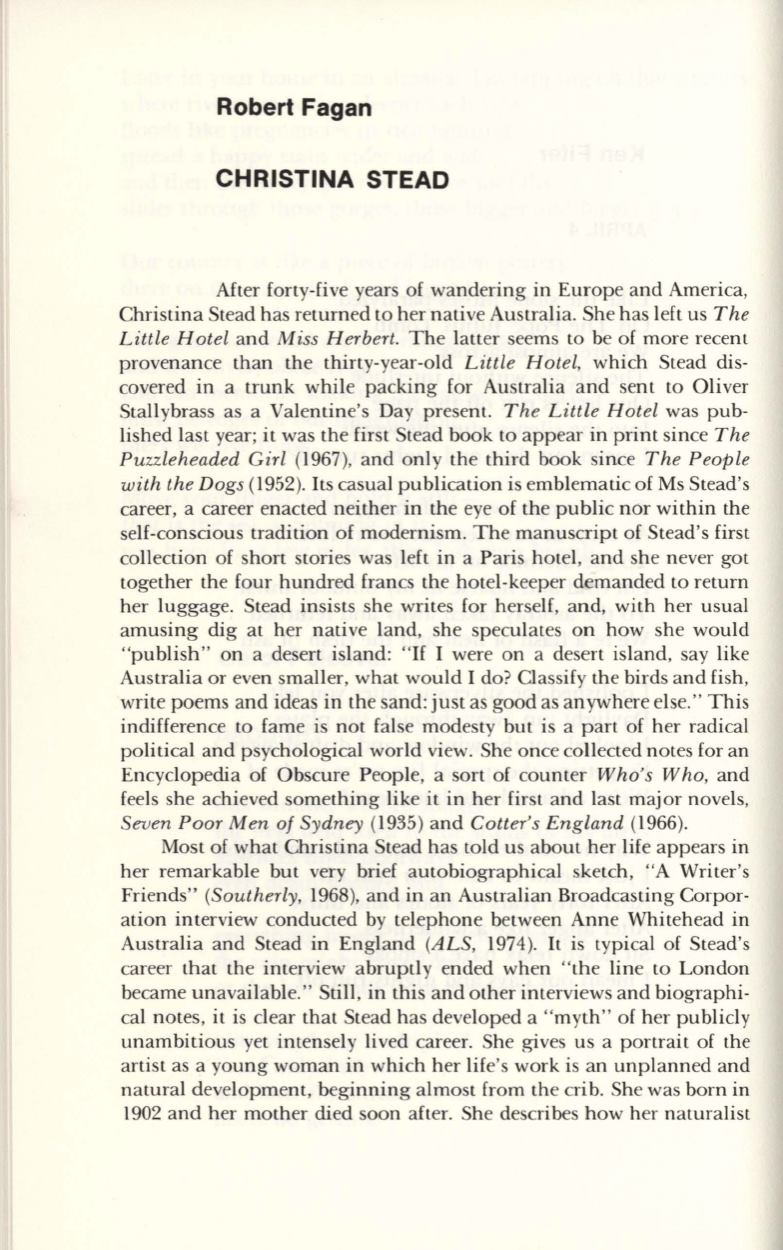
Robert Fagan
CHRISTINA STEAD
After forty-five years of wandering in Europe and America,
Christina Stead has returned to her native Australia. She has left us
The
Little Hotel
and
Miss Herbert.
The latter seems to be of more recent
provenance than the thirty-year-old
Little Hotel,
which Stead dis–
covered in a trunk while packing for Australia and sent
to
Oliver
Stallybrass as a Valentine's Day present.
The Little Hotel
was pub–
lished last year; it was the first Stead book
to
appear in print since
The
Puzzleheaded Girl
(1967), and only the third book since
The People
with the Dogs
(1952). Its casual publication is emblematic of Ms Stead's
career, a career enacted neither in the eye of the public nOr within the
self-conscious tradition of modernism. The manuscript of Stead's first
collection of short stories was left in a Paris hotel , and she never got
together the four hundred francs the hotel-keeper demanded to return
her luggage. Stead insists she writes for herself, and, with her usual
amusing dig at her native land, she speculates on how she would
"publish" on a desert island:
"If
I were on a desert island, say like
Australia or even smaller, what would I do? Classify the birds and fish,
write poems and ideas in the sand: just as good as an ywhere else." This
indifference to fame is not false modesty but is a part of her radical
political and psychological world view. She once collected notes for an
Encyclopedia of Obscure People, a sort of counter
Who's Who,
and
feels she achieved something like it in her first and last major novels,
Seven Poor Men of Sydney
(1935) and
Cotter's England (1966).
Most of what Christina Stead has told us about her life appears in
her remarkable but very brief autobiographical sketch, "A Writer's
Friends"
(Southerly,
1968), and in an Australian Broadcasting Corpor–
ation interview conducted by telephone between Anne Whitehead in
Australia and Stead in England
(ALS,
1974). It is typical of Stead's
career that the interview abruptly ended when "the line to London
became unavailable." Still , in this and other interviews and biographi–
cal notes, it is clear that Stead has developed a "myth" of her publicly
unambitious yet intensely lived career. She gives us a portrait of the
artist as a young woman in which her life's work is an unplanned and
natural development, beginning almost from the crib. She was born in
1902 and her mother died soon after. She descri bes how her naturalist


